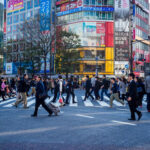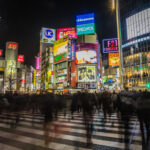When you change the shutter speed in a timelapse, you can control how people moving in and out of the frame transition. With faster shutter speeds the movements are more jagged; you can make out each individual. With longer shutter speeds, the movements are a lot smoother. In this video Jay P Morgan from The Slanted Lens gives a nice demonstration on the impact of changing shutter speed in timelapses:
There are four elements that impact a timelapse:
- ISO
- shutter speed
- aperture
- interval
For this demonstration Morgan just manipulates one of the four: shutter speed.

4 Elements That Impact Timelapses
To change shutter speed, especially if using a slower one in bright conditions, you needs to stop a lot of light from entering the camear. That’s where neutral density (ND) filters come into the picture. ND filters allow the use of really slow shutter speeds—1 second, 2 seconds and even 4 seconds—in bright conditions.
The other tool that Morgan uses in this demonstration is the Syrp Genie Motion Control. It allows a controlled panning while the timelapse sequence is being shot and adds a bit of spice to the footage. Morgan uses two of them: a Genie and a Genie Mini. Both can be controlled via apps and be given a pre-determined panning distance.

1/160 of a second
The shot above is from a timelapse shot at 1/60 of a second. As you can see, the frames appear as if frozen. You can identify each person quite easily.
At 1/25 of a second, people moving in an out of the frame are starting to blur a bit. From thereon, as the shutter speed is slowed down, movement becomes more and more blurred:

1 second exposure

2 second exposure
Adding motion blur to your frames might just be the touch that makes your timelapse stand out from the crowd.
Like This Article?
Don't Miss The Next One!
Join over 100,000 photographers of all experience levels who receive our free photography tips and articles to stay current:






Leave a Reply